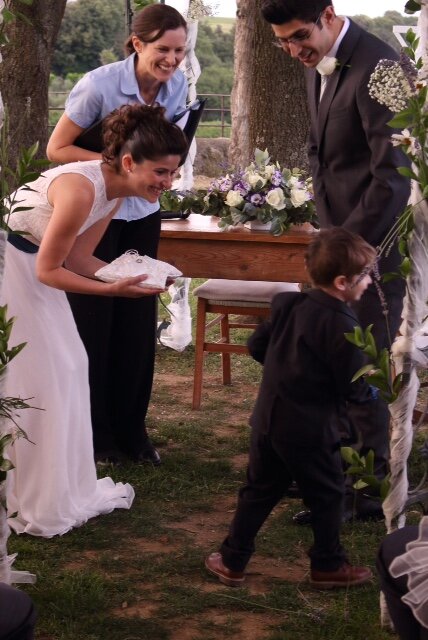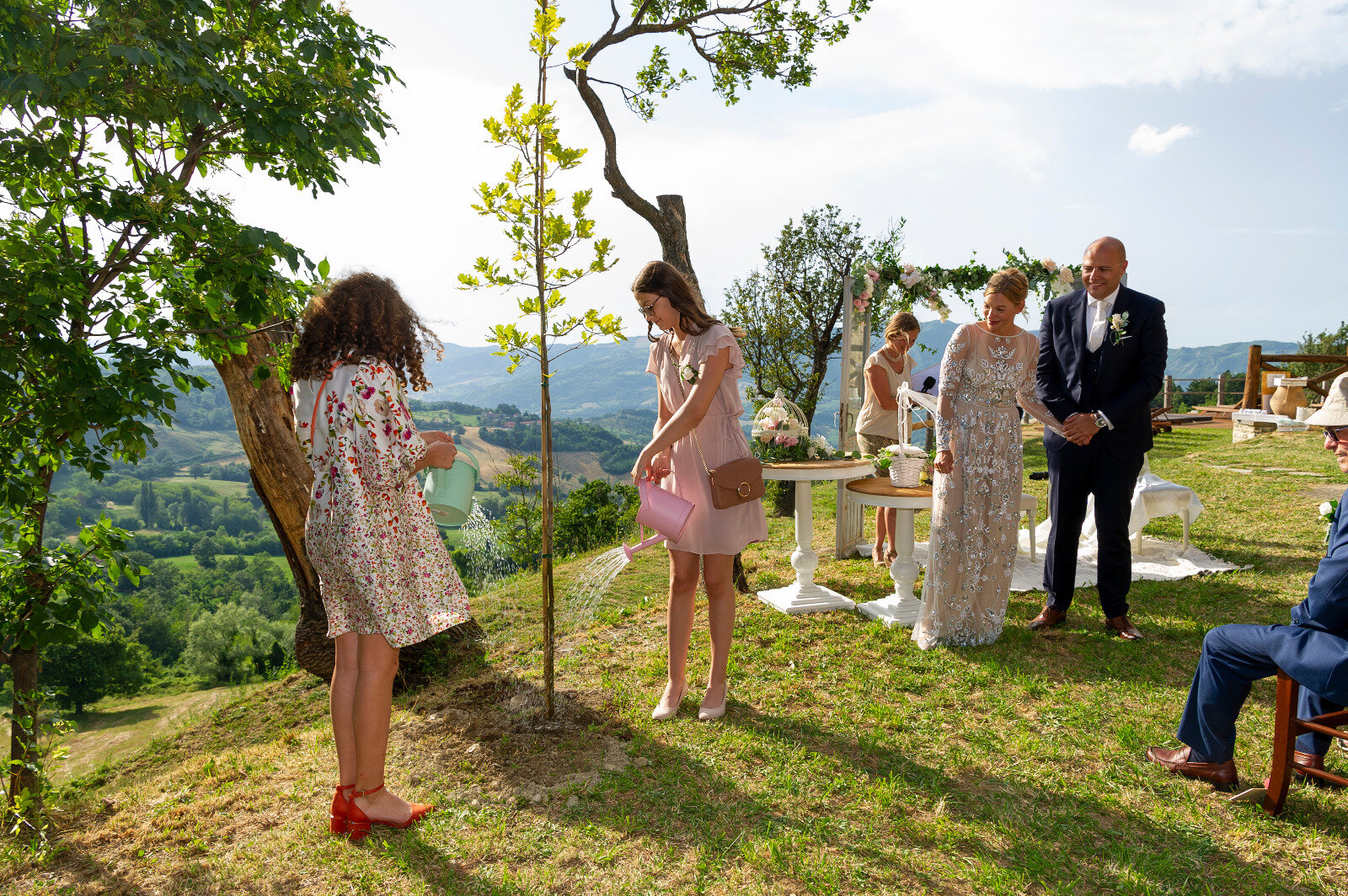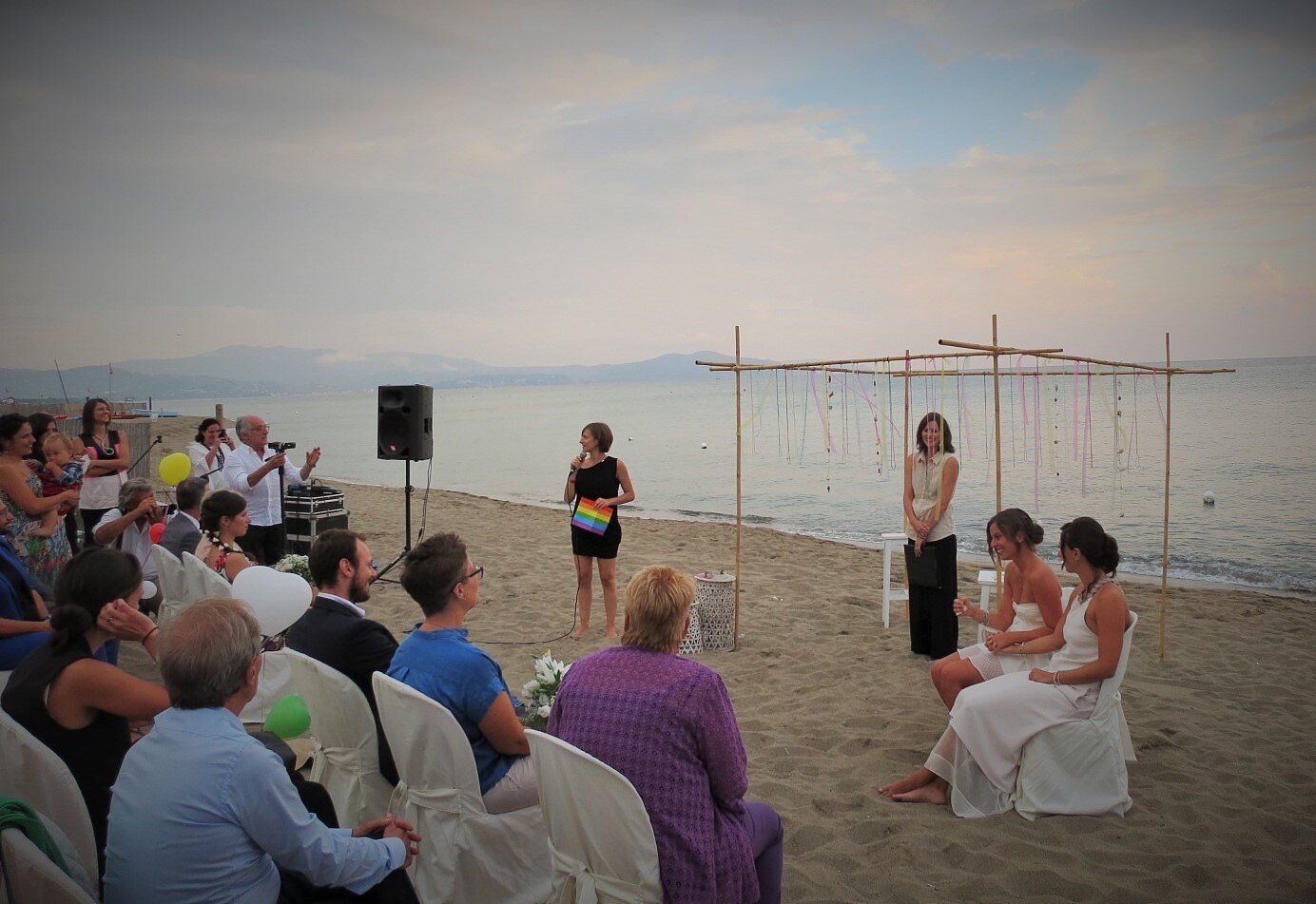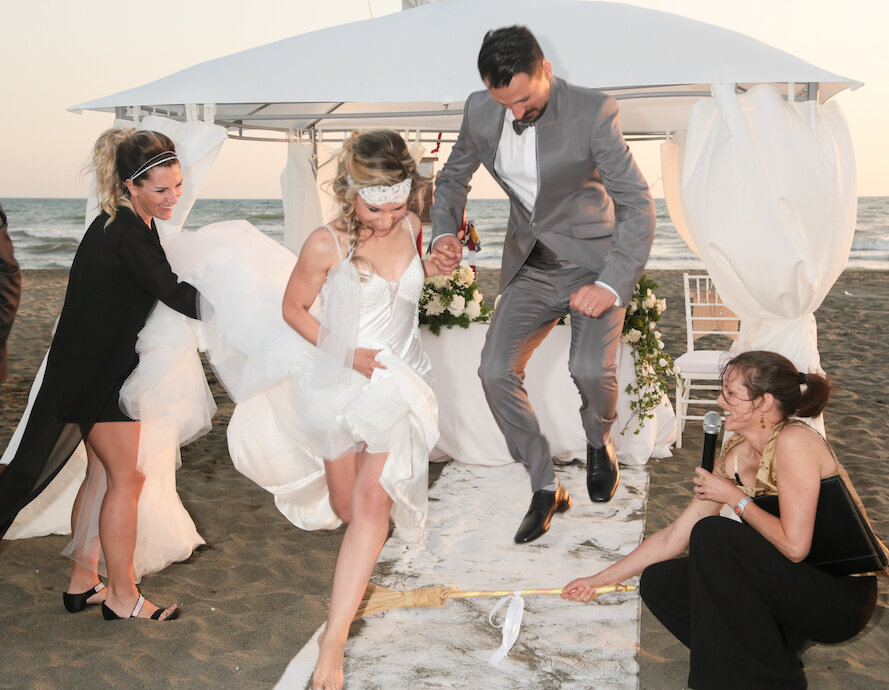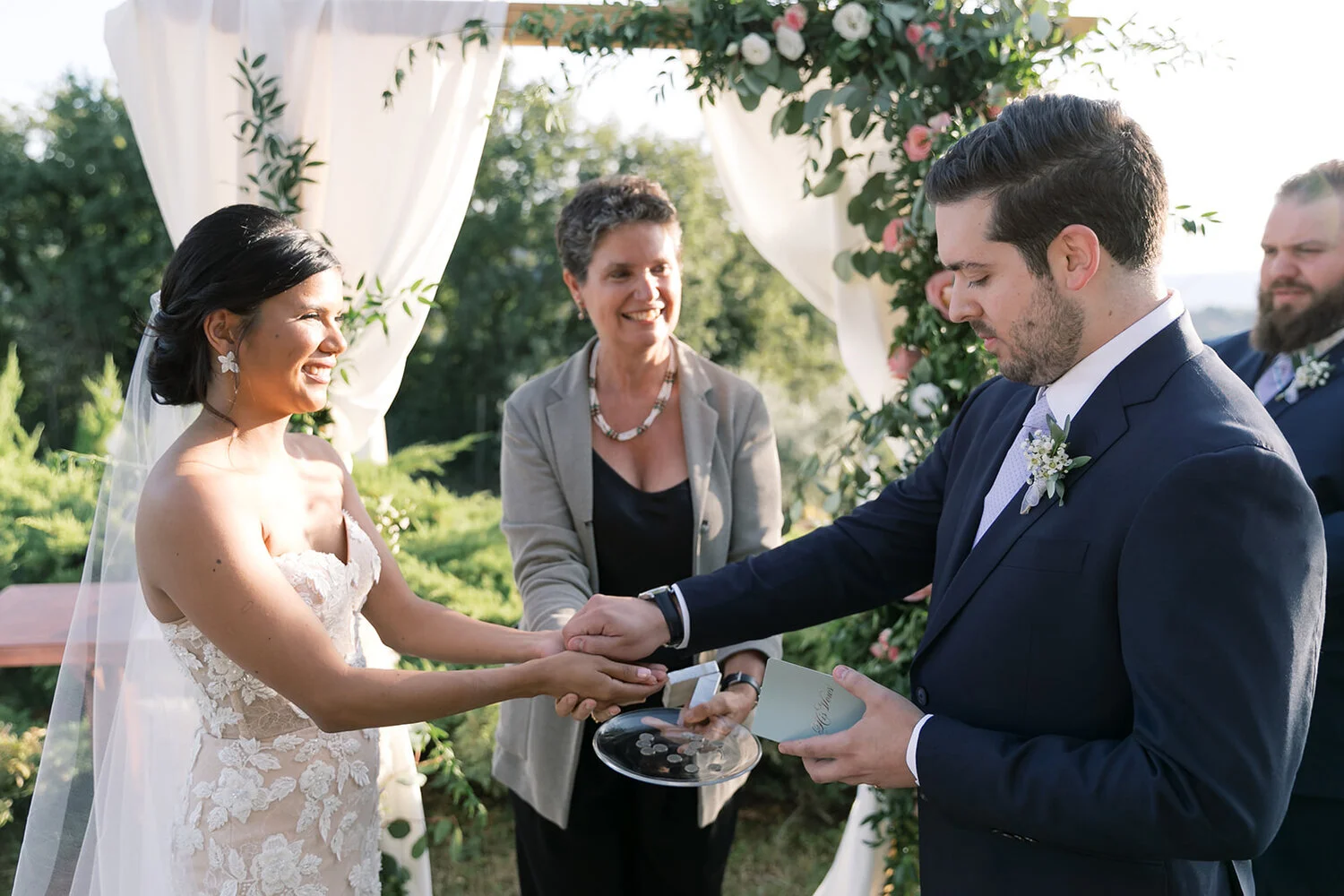To avoid this “consecutive translation” effect, the celebrant could welcome everybody in both languages, and then weave the other parts of the ceremony together using both languages but not in an exact translation. For example, in the Love Story (which is often the most personal and detailed elements the ceremony) the celebrant would use both languages so that all the guests are able to follow the story but without having to hear each detail twice, or laugh at the jokes again. This is a great challenge for the celebrant — a challenge we rise to with pleasure! — but it is usually very successful, inclusive, and emotional for both sides.
In either case, we advise switching over to the second language frequently so that guests do not have to sit through long spells without understanding anything..
A third way, especially if there is a small minority present who only understand one of the languages, would be to welcome them at the beginning and present the couple at the end in their own language. (We have actually done this in many different languages, even ones we don’t speak but it’s always nice to learn how to pronounce a short phrase!). Aside from these moments, the translation of the rest of the ceremony would be printed in advance in the form of a booklet. When the guests take their seats, they will find the booklet and be able to read along.
This format can also be used successfully for other parts of the ceremony such as readings. For example, we have done quite a few bilingual weddings where the couple chooses one reading in English and one in Italian and the translations are provided.
The vows
The vows can be the trickiest part of a bilingual wedding. What you certainly don’t want is for the guests to be able to read the vows before hearing the words from the couple! For this reason it is not a good idea to include them in any translation of the whole or parts of the ceremony.
So what should you do?
One way, even if the couple are both of the same mother-tongue, is for them to write their vows in a mixture of both. For example, Federica and Andrea chose to do this since, even though they are both Italian, they live international lives. They felt that using some English in their vows reflected their life and love, and it didn’t matter that not everybody could follow every word.








